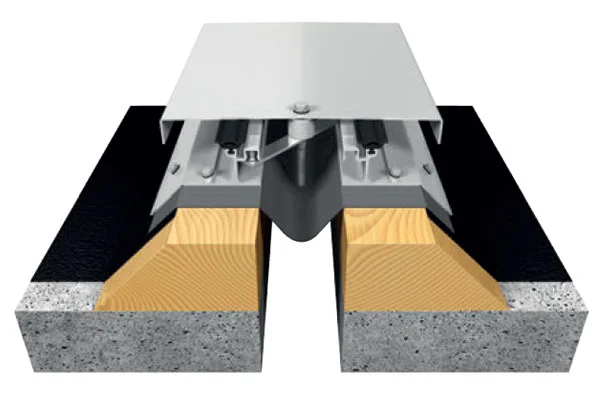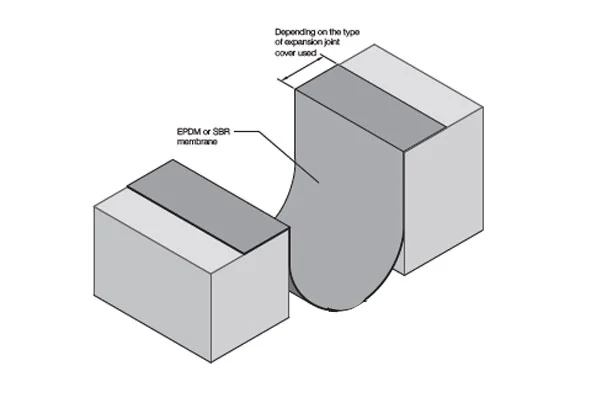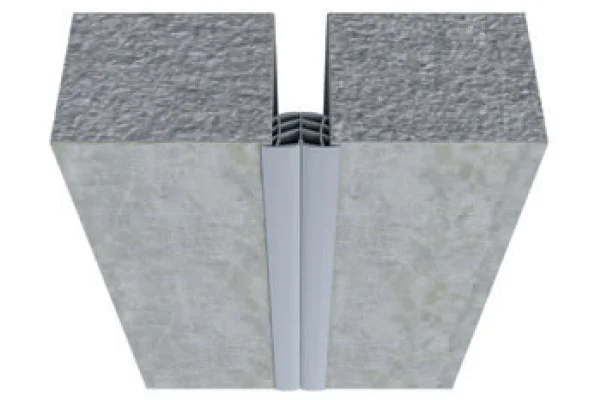
HOW CAN CONTRACTORS BUILD A STRONGER CASE FOR BONDING WHEN EXPANDING INTO NEW GEOGRAPHIC MARKETS?
Monique Nightingale-Pitter
Lead Home Office Construction Surety Manager
Chubb
When expanding into new geographic markets, contractors can build a case for support from their bonding company by showcasing their ability to manage potential challenges in the new region. Here are a few key strategies that contractors can implement.
- Develop a clear business plan. Contractors should provide a detailed business plan outlining goals, strategies, and risk mitigation measures tailored to the new market. A clear business plan demonstrates the contractor’s preparedness and commitment to success.
- Prove financial stability and operational capabilities. Demonstrating financial strength and a track record of successfully completing similar projects is key. A solid financial foundation better enables a contractor to navigate challenges such as unexpected conditions, costs, or delays. Highlighting past projects where the contractor has successfully managed similar risks helps demonstrate the contractor’s ability to execute, adapt, and overcome challenging situations.
- Build local connections. Establishing relationships with local subcontractors, suppliers, and other stakeholders in the new region is imperative. Local subcontractors and suppliers likely have a thorough understanding of the region’s regulations and market conditions, which can help contractors reduce the risk of non-compliance and delays. Local suppliers can help streamline access to materials and minimize logistical challenges.
- Highlight experienced leadership. Having qualified and experienced key personnel to manage and execute the work also increases the contractor’s likelihood of success in the new market. These tactics can not only help contractors build support from their bonding companies but also set the stage for successful expansion into new geographic markets.
Anthony Pensabene
Home Office Senior Territory Manager
Nationwide

It’s common for contractors to expand into different geographic markets when looking to grow their business, but this can bring challenges. When contractors enter a market, they may have to build relationships with new subcontractors and suppliers, learn the intricacies of local rules and regulations and establish a labor base. They also have to get to know their new competitors, so they know how they’ll compare when bidding on projects. Another really great way for a contractor to better understand a market and its intricacies is by partnering with a local firm. These partnerships can offer valuable insights into regional dynamics, help build credibility, and accelerate the learning curve when entering a new area. For sureties, these challenges mean greater risk, but contractors can take steps to demonstrate they are positioned for success. First, contractors should connect with their surety as soon as they are considering expanding to gain strategic guidance, as well as ensure the surety is licensed to operate in their new market. They should also develop a clear business plan that articulates how they will enter the market and study applicable local laws and regulations. As always, contractors should be prepared to demonstrate proof of financial stability to the surety, such as CPA-prepared statements, evidence of capital liquidity and strong cash-flow statements. They should also study the market and their new competition and begin building relationships with suppliers and subs. Some savvy contractors even prepare shadow bids for projects in the new market so they can see how they would stack up against the local competition. By partnering with a trusted surety professional early in the expansion process, contractors can ensure they are taking the necessary measures both to appeal to the surety’s appetite and to succeed in their new endeavor.
Brock Masterson
COO—Surety Division
Crum & Forster

Expanding into new geographic markets affords contractors exciting growth opportunities. At the same time, geographic expansion is one of the leading causes of contractor failure due to the many inherent uncertainties. It is critical that the company have a clear, detailed strategy in place before entering a new territory. Discussing this plan in detail with your producer and surety can ensure that you have adequate surety capacity throughout the expansion phase.
Contractors build extensive knowledge of their home market. They have formed trusted relationships with owners, subcontractors and suppliers. Estimating inputs, including labor cost and efficiency and materials prices, are well-known.
But how has the company generated this knowledge for the new region? What size and scope of work will be considered in the new territory compared to the standard footprint? What is the approach for project pursuits, and would a partnership or joint venture with a local firm provide the necessary connections to ensure an accurate bid?
What is the management and staffing plan? Is there a plan in place to ensure regular contact and connection with senior leadership? Will the company hire a new labor force to execute work?
By developing a plan to address these questions, the contractor will be in excellent position to share a viable strategy for geographic expansion with their surety and producer. These discussions are well-received by the surety and lead to greater trust in the leadership and operations of the contractor, which will provide benefits in future strategic growth efforts.
Joseph Crawford
Vice President—Surety Underwriting Contract
Philadelphia Insurance Companies

The reasons for expansion are important and should be part of a well-developed plan. Has work within their regional niche become scarce, leading to poor financial results, or has success naturally led management to seek organic growth in new areas? The business plan to expand must show knowledge of the new market’s local laws, licensing, zoning, permitting and economic conditions. Having sound legal representation is critical.
Being able to demonstrate knowledge of the competition is also meaningful. In the case of the public bid market, what firms and how many contractors are on the bid lists? Are there many successful regional and national contractors securing awards? What subcontractors and suppliers are aligned, and is there an opportunity to establish new relationships as a potential outsider? Successful firms will often track specific lettings and prepare mock project estimates that test their preconstruction department functions before actually submitting proposals in earnest.
Another critical issue is project management. Do they have adequate labor, access to subcontractors and material suppliers that can be delivered to the job without additional costs and potential delays? A talented project manager has experience in the local market, understands the demands of the customer and can deliver a completed job on time and on budget.
Lastly, the upper management team must be able to properly monitor the construction costs and results, while funding and supporting work in the new territory. Often times, remote offices become silos, with different accounting systems, management reporting and work culture, which ultimately causes poor performance and a lack of synergy.
A sound surety partner will look for open communication of these variables and a gradual approach to new territories, along with timely receipt of work-in-process results and details on the success of local pre-construction and project management teams.
Kevin McDowell
Vice President, Surety
Arch Insurance Group Inc.

Geographic expansion remains one of the leading risk factors in surety loss activity. Because of this, sureties apply greater scrutiny to bond requests for projects outside a contractor’s typical operating area. To strengthen their case for bonding, contractors should proactively address key underwriting concerns by focusing on owner selection, subcontractor risk and labor availability.
Owner selection is always important, but especially so when entering new markets. Sureties are more comfortable when contractors work with owners or GCs with which they have a proven relationship, reducing uncertainties around contract terms, payment practices and decision-making. If the relationship is new, then contractors should clearly communicate the rationale for pursuing the project and outline strategies to manage potential risks.
Subcontractor risk is another critical factor. If the contractor’s usual subs won’t travel, then sureties will want to know how new subs are evaluated and vetted. Bonding subcontractors can provide added protection, as it involves surety prequalification and offers recourse in case of default.
Labor availability continues to challenge contractors. Sureties expect a clear staffing plan that outlines how labor needs will be met, whether through existing crews or new hires, and how those new hires will be integrated into current and future operations.
Ultimately, transparent communication with the surety about these factors helps build trust and supports bonding decisions when expanding geographically. Contractors who demonstrate thoughtful planning and risk mitigation are more likely to secure support for out-of-territory projects.
Mike Ito
Senior Vice President
Amerisure Surety

Major project delays or claims are unfortunate and often unpredictable events that can impact a contractor’s internal resources and financial position. When faced with these events, a contractor will have to spend significant organizational time and resources to provide solutions. However, the impacts of these events—even when addressed properly by the contractor—can create difficulties with their surety company, in the worst cases, resulting in reductions in bonding support.
Surety companies strive to assess negative events and evaluate the contractor’s management of them as part of their ongoing capacity assessment of the business. Negative events that come as a surprise to a surety company can shake the confidence of underwriters and result in over-reaction. Clear, proactive communication with the surety company is a time-tested way of retaining confidence and keeping bonding support aligned with the contractor’s business plan.
The best way for a contractor to receive guidance in communicating with their surety company through these events is to engage a professional surety specialist agent. A professional surety agent will work with the contractor in understanding the problems at hand, how they are being addressed and the potential impacts. The agent can then filter relevant information to the surety company, minimizing surprises and providing clarity. A professional surety agent can help to facilitate discussion with the surety decision-makers and ensure questions or concerns are addressed smoothly. A professional surety agent can help ensure a contractor’s bonding program stays intact, even through an impactful negative event.
WHY HAS FASB TOPIC 606 CREATED INCONSISTENCIES IN HOW RETAINAGE IS BEING RECORDED ON THE BALANCE SHEET OF CONSTRUCTION CONTRACTORS?
Kevin Birch
Surety Regional AVP
CNA Surety

Revenue Recognition Standard FASB Topic 606 was implemented more than six years ago, and there continues a wide range how CPA firms are reporting retainage on the balance sheet. The inconsistencies in how retainage is being reported relates to the fact that the revenue recognition standard Topic 606 is a ‘principles based’ versus ‘rules based’ standard. ‘Principles’ allow a wide range of interpretation and in the balance sheet placement of retainage.
CPA firms that strictly interpret the revenue recognition standard Topic 606 will place retainage in three areas on the balance sheet: 1) contract receivables (an asset), 2) contract assets (an asset) and 3) contract liabilities (a liability). Such treatment of retainage will come with notes disclosure such as the following:
‘Billed and unbilled amounts for which payment is contingent on anything other than passage of time are included in contract assets and contract liabilities. Retainage which the company has an unconditional right to payment subject only to passage of time is included in contract receivables.’
Topic 606 permits jobs that are overbilled (a liability) are net against the retainage amount (an asset). This standard suggests that jobs which have $10,000,000 overbillings (a liability) and also these same jobs have $10,000,000 in retainage (an asset) have $0 contract liabilities. All of this should be disclosed in the notes of the financial statement which results in an understatement of assets and liabilities on the balance sheet.
WHAT FINANCIAL REPORTING TECHNOLOGIES ARE IMPROVING COMMUNICATION WITH SURETIES?
Robert Coon
President
National Association of Surety Bond Producers

The surety industry continues to explore opportunities to make the surety bonding process more efficient, including automating contractor financial information. In recent years, the National Association of Surety Bond Producers spent significant time and energy in standardizing bonding process documents and in automating an essential financial information tool, the work-in-progress report. Often, such reports require that the surety agent manually enters contractor financial data into a digital format. Hopefully, those days are numbered. NASBP and other organizations, including XBRL US and the Construction Progress Coalition, have been working diligently to build a better approach by employing XBRL [eXtensible Business Reporting Language] as the standard digital language to communicate financial information between construction software programs. With encouragement from NASBP, the U.S. Small Business Administration Bond Guarantee Program for small contractors leveraged this technology to streamline its process for WIP reporting. Construction software technology vendors are also starting to roll it out in their financial and management systems. Although contractors may not be aware that XBRL technology is what’s driving it, exchange of data in this standardized format will greatly enhance the interoperability of their various software packages. In addition, it has the potential to speed up the adoption of AI applications in construction. Improving the speed and efficiency of data reporting within the contractor’s operations and with their financial partners gives them the opportunity to focus on building better projects. This aligns well with the surety industry’s focus on helping contractors succeed.
HOW OFTEN SHOULD WIP REPORTS BE UPDATED TO KEEP BONDING RELATIONSHIPS STRONG?
Kasie Roark
Principal
CLA (Clifton Larson Allen LLP)

Work-in-progress reports are more than just financial snapshots—they’re trust-building tools. To maintain strong bonding relationships, contractors should update WIP reports at least quarterly, though monthly updates are ideal. Regular, consistent reporting provides accurate financial visibility and demonstrates a commitment to transparency.
Equally important is the quality of the estimates within those reports. Level-headed, consistent projections that don’t fluctuate wildly from one period to the next instill confidence in the contractor’s financial discipline and forecasting ability. Bonding companies rely on these estimates to assess risk, and erratic figures can raise red flags.
But estimates alone aren’t enough. The contractor’s ability to deliver on those projections—meeting schedules, budgets and performance targets—is the true measure of estimating skill. A track record of reliable execution reinforces the credibility of future WIP reports and strengthens the bonding relationship over time.
Timely updates, steady estimates and dependable performance form the trifecta of trust. Contractors who embrace this rhythm not only improve their financial reporting—they build enduring confidence with their bonding partners.
Gray K. Coyner
Principal
Thompson Greenspon
In construction bonding, the three Cs—character, capacity, capital—are essential to building a strong surety relationship. Sureties rely on your performance and accurate, timely financials to make informed decisions. A key tool in this process is the work-in-process report.
The WIP report should be updated and reviewed monthly as part of the month-end close, alongside job A/R and retainage. Effective analysis requires collaboration between project managers, accounting, and management.
There is an expectation that well-managed construction companies will produce a monthly WIP report, and your surety will expect this as your bonding program grows. The WIP report also helps contractors manage backlog to determine if new work should be bid.
Analysis of the WIP report can identify problem jobs before they become a bigger issue. Construction estimates change as work is performed, and identifying an item missed in an estimate or a change on a jobsite early is key. Analysis of the WIP schedule monthly will help identify and mitigate job fade and cash-flow issues much earlier than preparing the schedule quarterly or at the end of the year. Your banker and surety are integral parts of your project team and should be informed of any significant issues noted in this analysis. If issues are not addressed early, or worse, ignored, they could limit your bonding and lending capacity.
When timely and effectively analyzed, monthly WIP reports help contractors manage risk, drive growth and give their sureties the confidence to provide a bonding program.
WHAT LESSONS HAVE EMERGED FROM RECENT MAJOR SURETY CLAIMS THAT CONTRACTORS SHOULD TAKE TO HEART?
John A. McDevitt
Regional Vice President—Latin America, Client Relationship Liaison Manager—United States, Global Risks Surety Claims
Liberty Mutual Surety

Recent major surety claims have revealed critical lessons for contractors managing today’s increasingly complex and large-scale projects. These claims are reshaping the role of surety claims teams and how contractors perceive and engage with them. Notably, some of the most effective strategies for claims avoidance and mitigation have come from contractors who treat their surety as a strategic partner—not just during underwriting, but throughout the lifecycle of the bond.
Proactive collaboration with your surety claims team before issues arise can help contractors better navigate risk, protect their projects and ensure long-term success in a demanding construction landscape. Check to see if your surety claims teams offers access to in-house engineering and construction accounting professionals for project reviews, as well as opportunities to engage with experienced claims attorneys and specialists before claims arise.
Whether it’s a preconstruction project review, a lunch-and-learn session on mitigating payment bond claims, or a discussion on the importance of documentation and notice provisions in assembling affirmative claims or defenses, your surety claims team may be a valuable resource. Engaging early allows contractors to establish and reinforce best practices, review data and gain insights into industry trends, and explore effective strategies for claims avoidance and control. While some claims are unavoidable, building strong relationships and trust with your surety claims team before problems arise can dramatically improve the efficiency and efficacy of claim responses—for both contractor and surety. Reach out to your underwriting partners to explore the services your surety claims professionals may offer.
WHY ARE SURETIES LOOKING MORE CLOSELY AT SUBCONTRACTOR DEFAULT RISK IN 2025?
Jason Dettbarn
Senior Vice President—National Contract Surety Leader
Merchants Bonding Company

2025’s been an unpredictable year, and with several economic warning lights flashing, sureties may begin scrutinizing subcontractor default risk more intensely. Higher-for-longer financing costs are still pressuring balance sheets and deal flow, keeping credit tight for trades already operating on thin margins. Last year, corporate insolvencies hit a 14-year high, signaling potentially tougher credit cycles ahead and increased risk for undercapitalized subs.
General contractors are a good barometer of mounting pressure on subcontractors. An AGC/FMI risk study reported nearly 70% of respondents observed increased subcontractor distress or defaults heading into 2024—a trend that persists. Cash-flow pressures remain, with the industry reporting slow payments and uneven profitability which can erode liquidity and raise default probability.
Tariffs and policy uncertainty continue to affect materials, timing and pricing, which can push already-thin subcontractor margins into the red. And firms still cite an insufficient supply of workers and subcontractors among their top concerns. Labor problems create operational risks that can have a domino effect on work; schedule slippage, rework and, ultimately, defaults.
In response, some sureties are requesting deeper subcontractor prequalification, tighter scrutiny of WIP and cash conversion, and closer monitoring of backlog concentration (especially on megaprojects). A surety partner with common sense underwriting and claims will help with cash-flow issues before insolvency strikes. Stronger general contractor controls can include joint checks and disciplined pay-when-paid language. The aim isn’t to restrict capacity; it’s to ensure projects are staffed by subs with the character, capacity and capital to withstand unpredictable conditions.
HOW CAN CONTRACTORS IMPROVE THEIR BALANCE SHEETS TO INCREASE SURETY CAPACITY IN A RISING RATE ENVIRONMENT?
Todd Feuerman, CPA, CCA, MBA
Director
Ellin & Tucker

For contractors, bonding capacity is often the gateway to growth and ongoing operations, which hopefully lead to winning bids for profitable projects. Surety underwriters measure this capacity by closely evaluating a firm’s financial health, with the balance sheet and net working capital serving as key indicators.
Net working capital—current assets minus current liabilities—is one of the most critical metrics. Bonding companies typically apply a multiplier (often 10x) to a contractor’s working capital to establish maximum bonding capacity/bonding program. Improving this position requires disciplined management of receivables, proactive billing practices and careful vendor payment strategies. At the same time, contractors should minimize non-qualifying assets that underwriters exclude from working capital calculations—like prepaid expenses.
A strong balance sheet amplifies these efforts, and consistent profitability increases retained earnings. To bolster equity, focus on the prudent control of short-term debt and limiting owner distributions during growth periods. These practices create stability and demonstrate a contractor’s ability to weather downturns.
Equally important is financial transparency. Sureties expect CPA-reviewed statements prepared on a GAAP basis, including the percentage-of-completion method. They also want to see clear job schedules that outline backlog, contract assets/liabilities, as well as gross profit trends. Firms that provide timely, reliable financial reporting to the bonding company instill greater confidence in their financial health.
Finally, underwriters also weigh management quality, operational history and internal controls. Contractors who pair sound financial practices with disciplined project management are best positioned to increase bonding capacity—and in turn, their ability to secure and perform larger contracts.
HOW DO SURETY BOND CLAIMS IMPACT A CONTRACTOR’S ABILITY TO OBTAIN FUTURE BONDING?
Cullen S. Piske
President
The Gray Surety

A contractor whose business plan depends on surety bonding will likely encounter a claims situation at some point. When a surety receives a claim, it begins an investigation into the underlying circumstance, whether the issue is nonpayment or performance.
A contractor must maintain direct and frequent communication with their surety as well as their bond agent during the investigation phase. Providing documentation to the surety claims staff is essential to the process.
Performance claims often develop from small disagreements between parties. As a contractor, it is important to keep emotions out of a dispute. Committing to fulfill contractual obligations is essential. While it can be difficult, postponing disputes until a contract is complete will help the surety maintain confidence and continue to extend surety credit.
In the case of payment claims, a surety’s obligations may be at odds with a contractor’s priorities. Pay-if-paid clauses are rarely a surety defense, meaning that a surety could be deemed responsible for a claim despite a contractor not being paid. Additionally, back-charges on subcontractors must be meticulously documented and submitted to the surety if there are disputes with subs and suppliers.
Surety disputes occur occasionally, but communication with your surety is the keystone to maintaining a strong bonding relationship.
IS IT NECESSARY FOR SURETIES TO REVIEW CONTRACT DOCUMENTS PRIOR TO A CONTRACTOR BIDDING ON A PROJECT THAT REQUIRES BONDING?
Hank Nozko Jr.
President
ACSTAR Insurance Company

The surety industry is mixed on the subject of requiring review and approval of bid and contract documents for projects that require bonds. It depends on the size of the project, the size and strength of the contractor, and the relationship between the contractor and its surety. Application of the requirement is all over the place. There is no specific answer.
Generally, the peril associated to imbedded, unfriendly contract documents, is a bigger risk to smaller contractors versus larger contractors. There is a greater limit to financial resources of smaller contractors to absorb a project loss that has been intensified as the result of onerous provisions in the contract documents. For example, a surety will be more concerned by a smaller size principal entering into contracts that for example, waive the recovery of costs associated with a change unless a written notice in writing is provided within days of encountering a changed condition; requiring the contactor to perform extra work without payment until some contingent event or time; requiring the contractor to pay legal expenses even if the contractor prevails in a dispute.
Exposure to unreasonable consequential or delay damages. Very broad indemnification clauses that make a contractor liable for damages that are unrelated to its work. Clauses that allow withholding payment for reasons unrelated to the work. Clauses that force a contractor to absorb the expense of accelerating its work, like working overtime, without compensation, even if the contractor did not cause a delay. Costs and damages arising from these types of provisions could be multiples of the amount of a contract and possibly jeopardize the financial wellbeing of a contractor. A smaller contractor might be less able to absorb such extraordinary costs. Therefore, this surety and probably others, most likely will look at contract documents contemplated by contractors in which the financial resources might be disproportionate to the relative exposure to a specific set of contract documents that contain difficult contract provisions. The advantage of a surety reviewing contract documents, is the benefit of having a second set of eyes looking at the documents and sharing thoughts about risks associated to specific project documents, before bidding a project. The review is helpful and free.
SEE ALSO: EXECUTIVE INSIGHTS 2025: LEADERS IN CONSTRUCTION TECHNOLOGY II
-
Construction Executive, an award-winning magazine published by Associated Builders and Contractors, is the leading source for news, market developments and business issues impacting the construction industry. CE helps its more than 50,000 print readers understand and manage risk, technology, economics, legal challenges and more to run more profitable and productive businesses.








